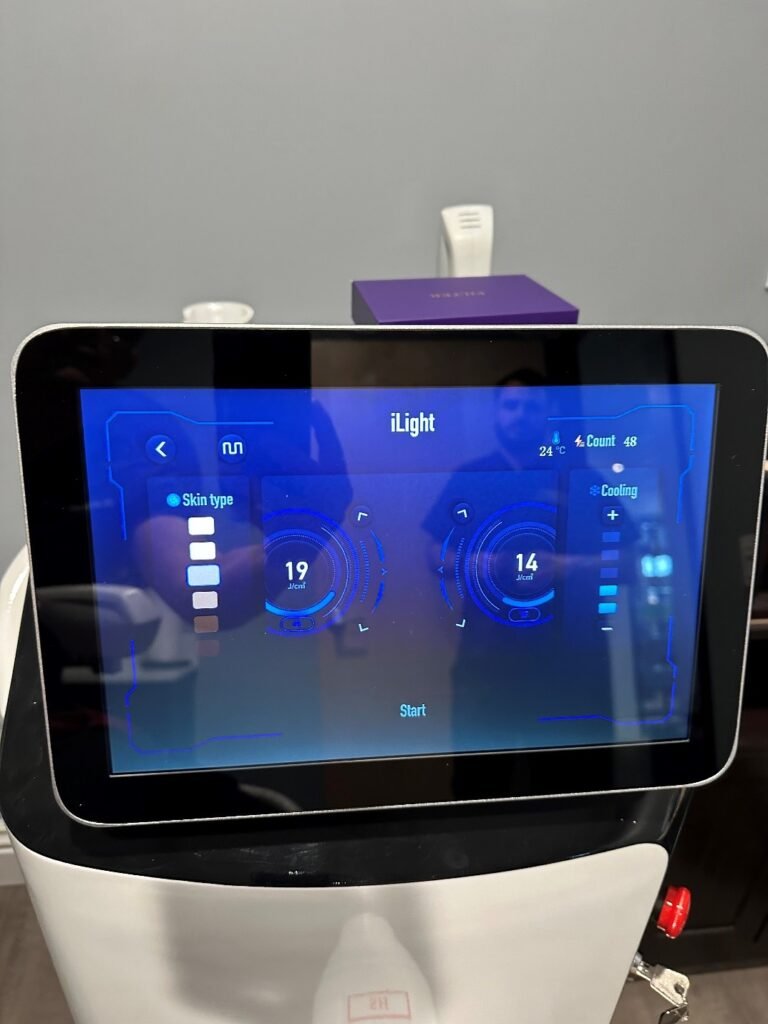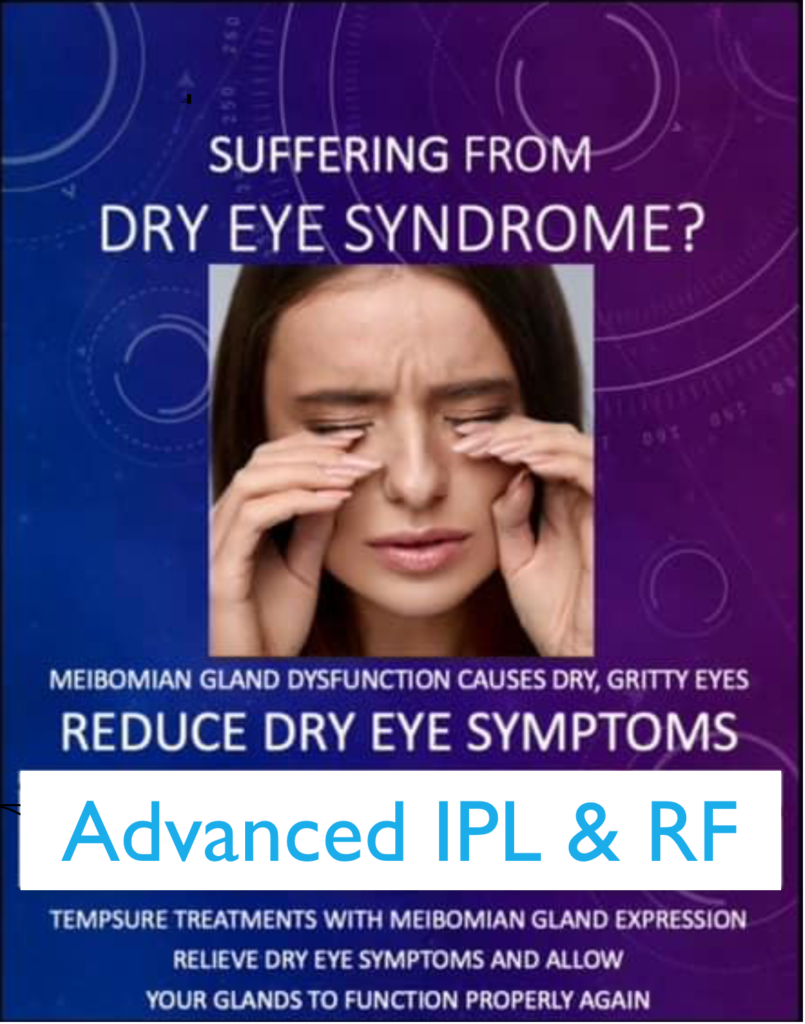IPL (Intense Pulsed Light) and RF (Radiofrequency) therapy are advanced treatment modalities used to address dry eye syndrome. They involve the application of light energy (IPL) or radiofrequency waves (RF) to target inflammation and dysfunction in the meibomian glands, which are responsible for producing the oily layer of tears. These treatments aim to restore the balance of tear film components, alleviate symptoms, and improve overall ocular comfort.
IPL therapy delivers pulses of broad-spectrum light to the skin around the eyes, targeting abnormal blood vessels and reducing inflammation in the meibomian glands. By selectively heating and shrinking these vessels, IPL therapy helps to decrease the inflammatory response and promote healthier gland function. RF therapy, on the other hand, uses controlled radiofrequency waves to generate heat within the meibomian glands, liquefying any obstructive meibum and improving the flow of oil onto the ocular surface. This dual approach addresses both inflammation and gland dysfunction, leading to improved tear film stability and reduced dry eye symptoms.
Candidates for IPL and RF therapy typically include individuals with moderate to severe dry eye symptoms, particularly those related to meibomian gland dysfunction (MGD). Common symptoms of MGD include eye irritation, redness, fluctuating vision, and discomfort, especially upon waking or prolonged screen time. Your eye care provider can assess your symptoms, perform diagnostic tests such as meibography to evaluate gland structure, and determine if these treatments are suitable for you.
During IPL therapy, you will wear protective eyewear while pulses of light are applied to the skin around your eyes. The procedure is relatively quick and painless, with each session lasting approximately 15-20 minutes. RF therapy involves the use of a handheld device to deliver controlled heat to the meibomian glands along the lower eyelids. Your provider will apply a conductive gel to the treatment area to enhance the penetration of radiofrequency waves and ensure comfort during the procedure. Both treatments are non-invasive and typically well-tolerated, allowing you to resume normal activities immediately afterward.
The number of IPL and RF therapy sessions required varies depending on the severity of your dry eye symptoms, the extent of meibomian gland dysfunction, and your response to treatment. In general, a series of sessions spaced several weeks apart is recommended to achieve optimal results. Your eye care provider will create a customized treatment plan based on your individual needs and monitor your progress throughout the course of therapy.
IPL and RF therapy are generally well-tolerated, with minimal discomfort during the procedure. Some patients may experience mild warmth or tingling sensations, particularly during RF therapy, as the heat is applied to the eyelids. However, these sensations are temporary and usually subside quickly once the treatment is complete. Your provider can adjust the intensity of the treatment to ensure your comfort and minimize any discomfort.
Side effects of IPL and RF therapy are rare but may include temporary redness, swelling, or sensitivity in the treated area. These effects typically resolve within a few hours to days after the procedure and can be managed with cold compresses or over-the-counter lubricating eye drops. Severe adverse reactions such as burns or scarring are extremely rare when the treatments are performed by a qualified and experienced provider using appropriate safety protocols.
Some patients may experience improvement in their dry eye symptoms after just one or two sessions of IPL or RF therapy. However, optimal results are usually achieved after completing a full series of treatments, typically consisting of 3-5 sessions spaced several weeks apart. Your provider will assess your response to treatment and adjust the treatment plan as needed to optimize outcomes and ensure long-term relief from dry eye symptoms.
Yes, IPL and RF therapy can be combined with other dry eye treatments to enhance their effectiveness and address multiple underlying causes of dry eye syndrome. Common adjunctive therapies include artificial tears, lubricating eye gels or ointments, eyelid hygiene techniques such as warm compresses and lid massage, and oral supplements containing omega-3 fatty acids. Your eye care provider will tailor a comprehensive treatment plan to address your specific needs and optimize your ocular health.
The number of IPL and RF therapy sessions required varies depending on the severity of your dry eye symptoms, the extent of meibomian gland dysfunction, and your response to treatment. In general, a series of sessions spaced several weeks apart is recommended to achieve optimal results. Your eye care provider will create a customized treatment plan based on your individual needs and monitor your progress throughout the course of therapy.


